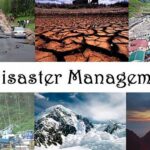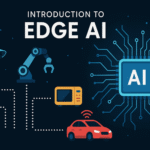The rise of biohacking is more than just a tech trend it’s a human revolution. In the past, technology was something we carried in our hands or kept on our desks. But today, the line between humans and technology is beginning to blur. This growing movement, known as biohacking, is about enhancing human performance by integrating technology, science, and biology directly with the human body. From implantable microchips to DIY genetic experiments, biohacking is reshaping how we think about health, identity, and even the future of evolution.

What is Biohacking?
At its core, biohacking is the practice of using technology, biology, and lifestyle changes to improve physical and mental performance. Some biohackers focus on simple changes like nutrition, meditation, or sleep tracking, while others experiment with high-tech methods such as implantable devices, genetic modifications, and brain-computer interfaces.
Biohacking can be divided into three main categories:
- Nutrigenomics – Adjusting diet and lifestyle based on how your genes respond to certain nutrients.
- DIY Biology – People experimenting with biology in home labs, outside of traditional research institutions.
- Grinder Biohacking – The use of implants, chips, and devices to literally merge technology with the body.
Examples of Biohacking in Action
- Implantable Microchips
Some people already have microchips implanted in their hands that allow them to unlock doors, make payments, or store digital identity. These chips act like contactless cards, but since they’re embedded in the body, they make daily life more seamless. - Neural Implants and Brain Interfaces
Companies like Neuralink are developing brain-computer interfaces that could allow humans to control devices using their thoughts. While this technology is still in development, it promises to help people with disabilities and may eventually enable “mind-to-machine” communication. - Wearable and Insertable Sensors
Beyond smartwatches, advanced biohacking involves sensors implanted under the skin to track glucose levels, body temperature, and other health metrics in real-time. This could revolutionize preventive healthcare. - CRISPR Gene Editing
DIY biologists and researchers are exploring gene-editing technologies like CRISPR to modify organisms, and in some cases, even attempt human modifications. Although highly controversial, this has potential for curing genetic diseases. - Performance Enhancements
From nootropic supplements (smart drugs) to light therapy and extreme cold exposure, biohackers are testing ways to improve memory, focus, and longevity.
Why is Biohacking Becoming Popular?
- Desire for Control Over Health
Many people want more control over their health rather than relying only on traditional medicine. Biohacking gives individuals tools to monitor and improve their bodies in real time. - Longevity and Anti-Aging Trends
With global interest in longevity tech, people are seeking ways to extend their lifespan and stay healthy longer. Biohacking offers methods to slow aging and increase vitality. - Advances in Technology
Affordable sensors, wearables, and genetic kits have made it easier than ever for ordinary people to experiment with biohacking. - The Push for Human Enhancement
In a competitive world, people are eager to find ways to perform better—mentally, physically, and emotionally. Biohacking represents the next step in human optimization.
The Ethical Concerns of Biohacking
While biohacking opens incredible possibilities, it also raises serious ethical and safety questions:
- Privacy Risks: If implantable chips are hacked, personal identity and financial information could be at risk.
- Health Dangers: DIY biohacking can be dangerous, especially if unregulated implants or genetic modifications go wrong.
- Social Inequality: Will only the wealthy be able to afford advanced enhancements, creating a new “tech-elite” class?
- Human Identity: As humans merge more with machines, questions arise about what it means to be human.
The Future of Biohacking
Looking ahead, biohacking will likely become a mainstream part of medicine and lifestyle:
- Mainstream Implants: Payments, digital IDs, and medical sensors embedded in the body.
- AI-Powered Health: Artificial intelligence guiding personal health decisions based on real-time data.
- Longevity Breakthroughs: Genetic editing and anti-aging treatments extending lifespans.
- Transhumanism: The ultimate form of biohacking—where humans evolve into beings enhanced with advanced technology.
Conclusion
As technology and biology merge, we are beginning to redefine what it means to be human. From unlocking doors with a wave of the hand to potentially curing genetic diseases, biohacking holds the promise of a future where human potential is limitless.
But with this promise comes responsibility. The world must carefully balance innovation with ethics, ensuring that biohacking enhances humanity without compromising safety, equality, or identity.
In short, biohacking is not just about adding technology to the body-it’s about exploring the future of human evolution itself. Also Check Rise of Edge Computing – Why It Matters – 2025



1 thought on “Rise of Biohacking – Merging Tech with the Human Body 2025”